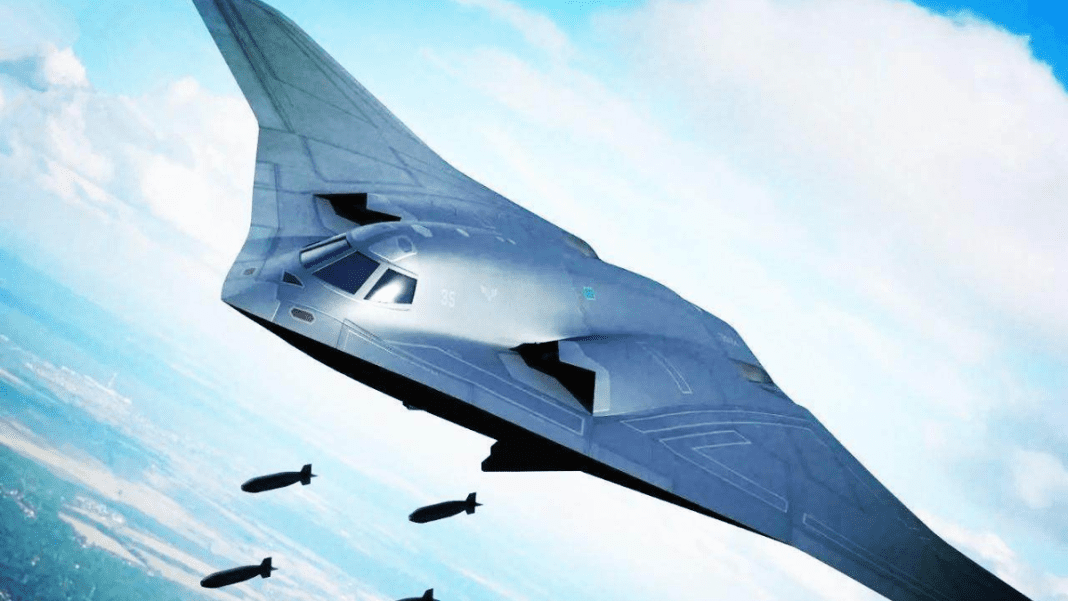The Chinese military is developing a new stealth bomber called the H-20, and it has caught the attention of defense experts across the world—especially the Pentagon.
China’s Mysterious H-20 Stealth Bomber Raises Global Alarm
Although the public knows very little about this aircraft, defense experts treat it as a serious threat because it could carry hypersonic missiles and tactical nuclear weapons.
The United States is developing the next-generation B-21 Raider bomber, which is expected to face competition from the H-20. Experts believe China’s H-20 offers high-speed, long-range capabilities and advanced stealth features, even though it remains largely secret.
Pentagon reports have tracked this bomber for years. In 2018, the U.S. Department of Defense (DoD) said that the H-20’s 8,500-kilometer range, armed with 2,000-kilometer CJ-20 cruise missiles, could enable it to reach places like Guam, Hawaii, and even parts of the U.S. mainland.
The People’s Liberation Army Air Force (PLAAF) plans to produce dozens of H-20 bombers by 2035. Experts estimate that it could deploy at least 50 aircraft, each capable of carrying up to 16 weapons. This means China could potentially launch hundreds of nuclear warheads from the skies.
China Revives a Forgotten U.S. Dream — Hypersonic Engine Burns for 2.2 Seconds That Shook the World
A well-known military analyst, James Howe, who has worked on defense studies for several U.S. defense and intelligence agencies, explained that China has the industrial capability to mass-produce such bombers quickly. He pointed out that China already builds 20 to 30 H-6 bombers per year and has plans to build 150 civilian C-919 passenger planes every year. So producing 50 H-20 bombers in about a decade is considered feasible.
How China’s H-20 Could Fire Hypersonic & Tactical Nuclear Missiles
The H-20’s capabilities extend beyond stealth and long-distance flying. Its potential to carry both tactical and hypersonic nuclear weapons is what makes it especially concerning. These weapons can travel at great speeds, launch quickly, and cause enormous destruction.
Hypersonic weapons exceed five times the speed of sound (Mach 5). China has tested one such missile, the YJ-21, from warships and may now use it on bombers as well.
There’s an air-launched version of the YJ-21, called the KD-21, which can reach speeds of Mach 6 and hit targets as far as 1,500 kilometers away. According to the Chinese state-run Global Times newspaper, China’s older H-6K bomber has already been spotted carrying this missile. This means that the newer, more advanced H-20 may also carry the same or upgraded versions.
Dominating the Space Race with US: China’s Chang’e 6 is Ambitious
These weapons serve dual purposes. China can use them for both nuclear and conventional attacks. U.S. intelligence reports that China designs most missiles to be dual-use. This includes both ballistic and hypersonic missiles. Howe says China has tested swapping warheads in the field. These tests show China can easily switch between conventional and nuclear modes.
China’s DF-26 missile, often called a “carrier killer,” is one example. It can hit targets 2,000 miles away and could be used for nuclear attacks. The rapid increase in such flexible and fast weaponry makes the H-20 bomber a strong candidate for deploying them from the air.
Alarming Nuclear Build-up and Military Production Power
China’s nuclear arsenal is growing quickly; as of 2024, estimates put the number of warheads at 500–600. By 2035, this number could grow to 1,500, but some experts, like James Howe, believe it may reach up to 6,000 strategic and 2,500 theater warheads. His research highlights China’s focus on scaling both long-range strategic and shorter-range tactical nuclear weapons.
The H-20 stealth bomber is expected to carry a payload between 10 and 40 tons, possibly allowing it to deploy a wide range of bombs and missiles. In comparison, the U.S. B-2 bomber carries about 20 tons. This capability could make the H-20 a central piece in China’s air-based nuclear delivery system.
🚀 China’s Feitian 2 breaks sound barrier and rules of physics — switches engines mid-flight
China’s civil-military fusion approach—where civilian industries are closely tied to military projects—has enabled rapid production of advanced aircraft and weapons. This efficient manufacturing strategy allows China to scale up its military assets at a much faster rate than many countries.
Although the U.S. B-21 Raider is considered a technological benchmark, many of its features remain classified. Still, China’s H-20, combined with its expanding hypersonic and nuclear missile programs, is raising serious concerns among defense experts monitoring its growing production capabilities and long-range strike potential.

